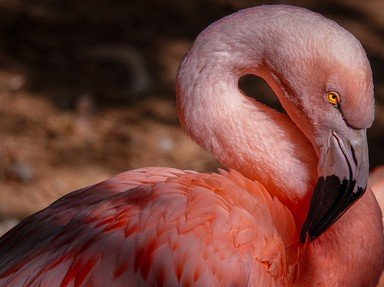Quiz Answer Key and Fun Facts
1. The flamingo is the only extant member of which animal order?
2. In 1958, the first flamingo to ever hatch in a European zoo took place in Basel, Switzerland. Which species of flamingo was this?
3. Lake Natron is an important place for the lesser flamingo to breed. Which country is this located in?
4. The World's oldest flamingo died aged (at least) 83 in 2014, in Adelaide Zoo, Australia. What species of flamingo was he?
5. The flamingo has a gland that excretes excess salt from its body. Which body part of the flamingo does the salt exit from?
6. James's flamingo is one of the six species of flamingo. Who is this species named after?
7. Flamingos get their pink colouring from their food intake. Which of these is within the food, and gives them the colouring?
8. Flamingos can fly.
9. Flamingos can sleep standing on one leg. Why do they do this?
10. The American flamingo has no set breeding season. Why is this?
11. The rarest species of flamingo is which of these?
12. Which of these is an extinct species of bird similar to the modern flamingo?
13. Flamingo chicks are hatched pink, due to the ingestion of minerals their mothers intake.
14. The only species of flamingo to have yellow legs is which of these?
15. The flamingo is the national bird of which of these countries?
Source: Author
LuH77
This quiz was reviewed by FunTrivia editor
gtho4 before going online.
Any errors found in FunTrivia content are routinely corrected through our feedback system.
